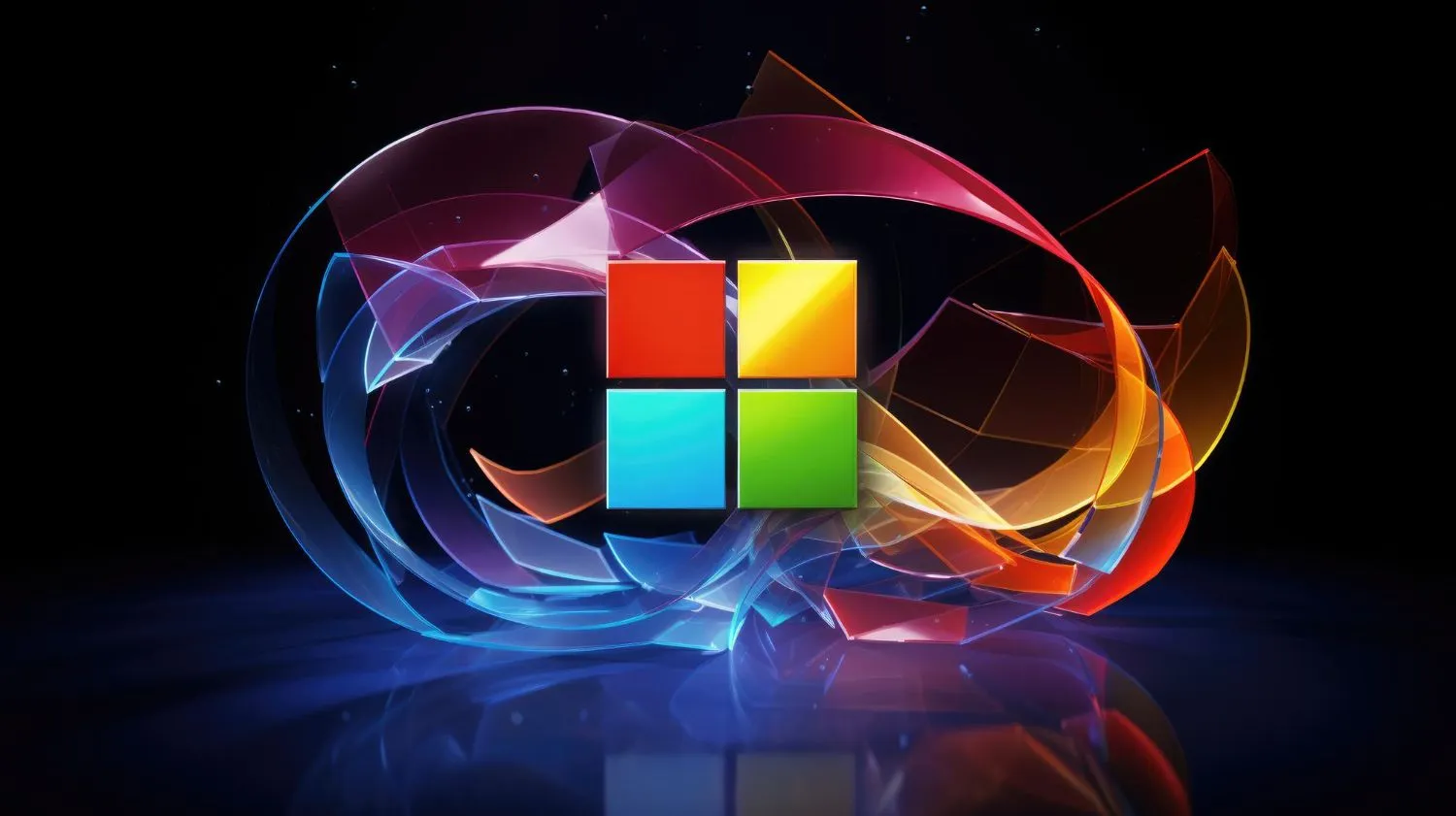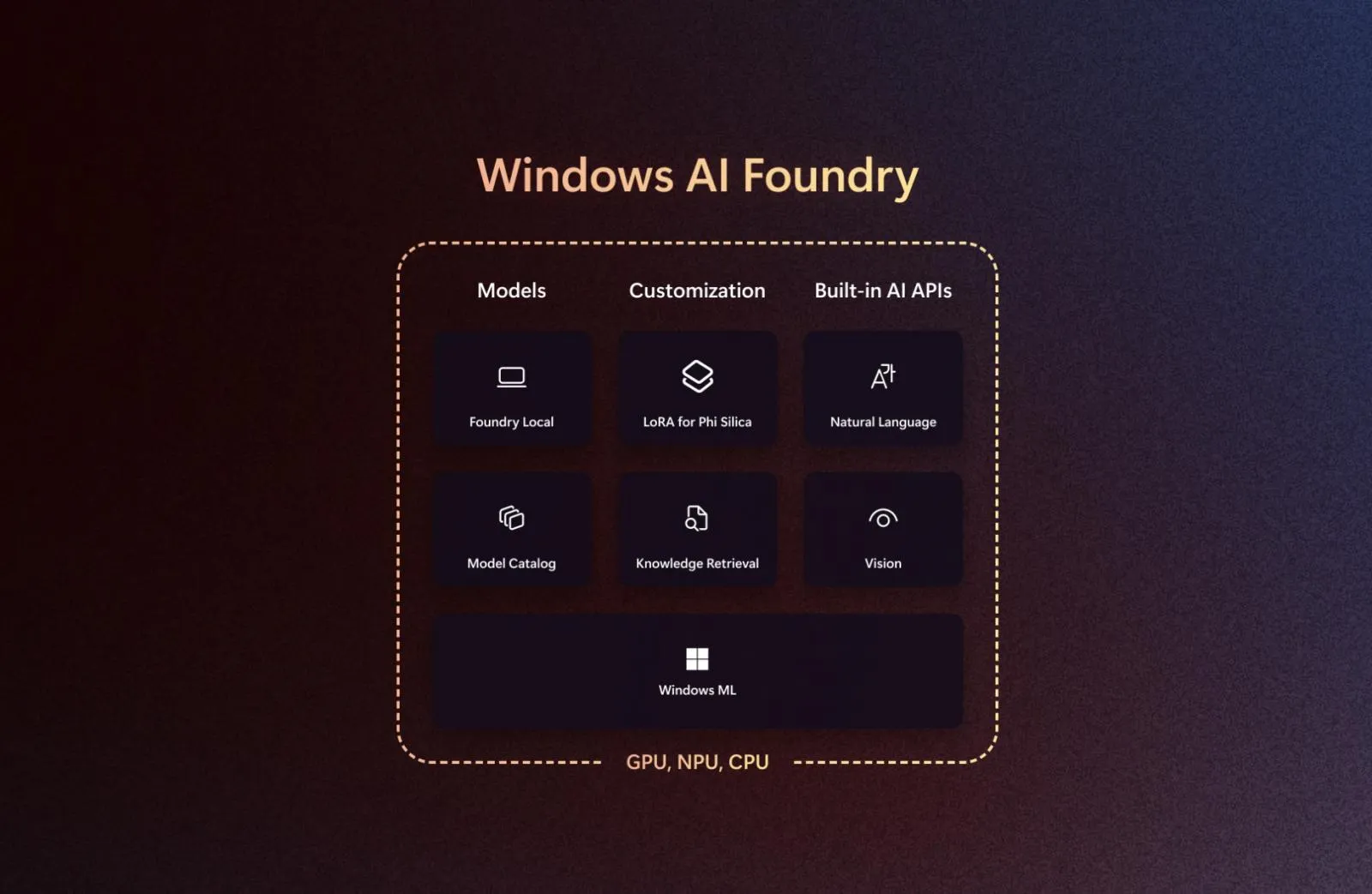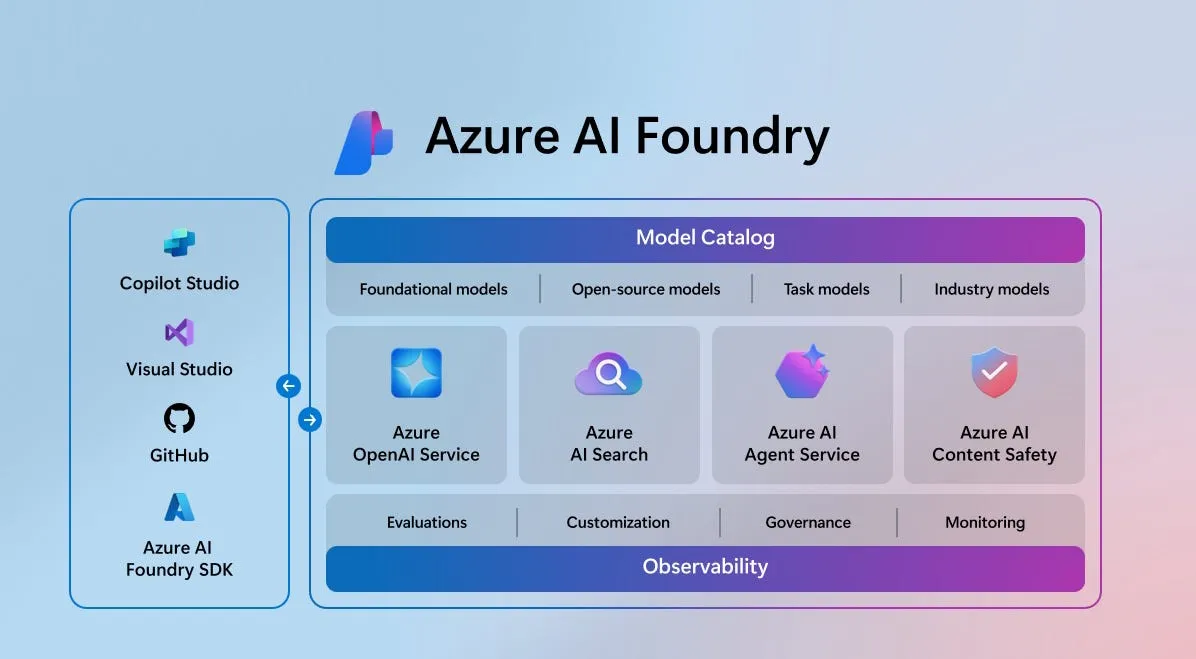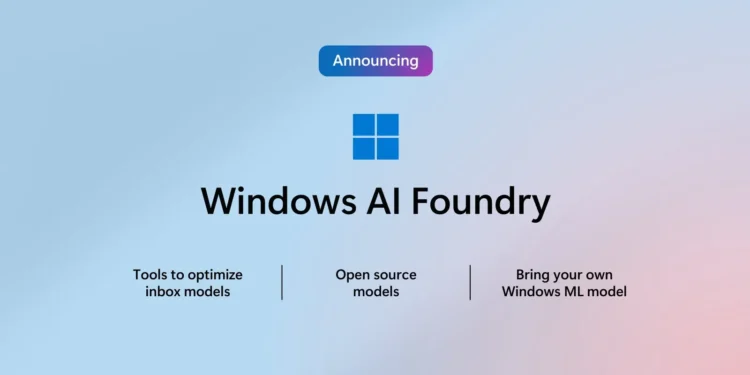In a bold move at its Build 2025 conference, Microsoft has taken a significant step in reshaping the future of artificial intelligence development. The tech giant has unveiled the Windows AI Foundry, a rebranding and expansion of its previous Windows Copilot Runtime service. This newly enhanced platform promises to make it easier for developers to create, optimize, and deploy AI-powered applications on Windows devices, offering both local and cloud-based solutions for AI app development.

Introducing Windows AI Foundry: A Unified Platform for AI Development
Microsoft’s announcement of Windows AI Foundry marks a transformative moment for developers working in the AI space. The company has dubbed this initiative a “unified platform for local AI development,” providing a streamlined way to fine-tune and deploy AI models that power Windows apps. The goal is clear: simplify the development process, while driving innovation within Microsoft’s own ecosystem.
With Windows AI Foundry, developers will be able to leverage an array of tools designed to optimize AI models for Windows devices. This includes the automatic detection of hardware and the seamless fetching of necessary software components for any given AI model. Furthermore, Microsoft has committed to ensuring that these components stay up to date as new devices are released, ensuring that developers can always access the latest tools and capabilities.
Satya Nadella, CEO of Microsoft, has long emphasized the importance of AI for the company’s future. “We have $13 billion in annualized AI revenue,” Nadella revealed earlier this year, pointing to Microsoft’s partnership with OpenAI as a key contributor to this impressive figure. While Microsoft may not directly profit from third-party AI-powered apps on Windows, the company is positioning itself as the facilitator of an AI-driven ecosystem, helping developers create the next wave of cutting-edge applications.
Foundry Local: Empowering Developers with On-Device AI
A standout feature of the Windows AI Foundry is Foundry Local, a groundbreaking service that enables AI models to run directly on client devices. This is a game-changer for developers looking to integrate AI functionality into their apps without needing to rely on cloud-based servers. Foundry Local supports both Windows and macOS devices, offering a cross-platform solution for AI development.

Foundry Local utilizes the ONNX Runtime, an open-source project designed to accelerate AI model deployment across various platforms. This allows developers to harness the power of AI on their local machines, optimizing performance and reducing dependency on remote servers.
One of the key benefits of Foundry Local is its ability to automatically detect device hardware—whether it’s the CPU, GPU, or NPU—and recommend compatible AI models for developers to try. “Foundry Local will automatically detect device hardware and list compatible models for developers to try,” Microsoft explained. This level of automation significantly reduces the setup time for developers, allowing them to focus more on building and less on configuration.
Additionally, Foundry Local comes equipped with a command-line interface that developers can use to interact with AI models running on a local server. Commands like “Foundry model list” and “Foundry model run” enable developers to browse, test, and experiment with models directly on their devices, providing a highly intuitive and efficient development experience.
Seamless Integration for Enhanced Developer Experience
Windows AI Foundry’s integration of Foundry Local is designed with ease of use in mind. Developers will have access to the Foundry Local SDK, which simplifies the process of integrating Foundry Local into their applications. With this SDK, developers can effortlessly bring AI-powered features to their apps, whether they’re building desktop, web, or mobile solutions.

The ease of integration and the powerful capabilities of Foundry Local represent a significant leap forward in empowering developers to create smarter, more efficient applications. Whether it’s for consumer-facing products or enterprise solutions, the potential for AI-powered innovation on Windows devices is boundless.
Microsoft’s Vision: A Flourishing AI Ecosystem
While Microsoft has not explicitly stated how it plans to profit directly from third-party AI applications on Windows, the company is clearly betting on the long-term success of this ecosystem. By providing developers with the resources to build high-quality AI apps on its flagship operating system, Microsoft is positioning itself as a central player in the AI space, potentially putting its competitors at a disadvantage.
The creation of Windows AI Foundry is part of a broader trend in which tech giants like Microsoft are investing heavily in AI tools and resources to foster innovation and attract developers to their platforms. As the demand for AI-powered applications continues to grow, Microsoft’s efforts to create an ecosystem that supports and nurtures these developments will likely pay off in spades.

As AI continues to revolutionize industries across the globe, Microsoft’s new Windows AI Foundry platform is poised to play a crucial role in shaping the future of software development. With its focus on local AI deployment, seamless integration, and developer-friendly tools, the platform offers an exciting glimpse into what’s possible for AI-powered applications on Windows devices.
Whether you’re a seasoned developer or just starting out, Windows AI Foundry promises to be a powerful tool in your AI development toolkit. With its innovative features and focus on simplicity, the platform is set to redefine the way AI models are built, optimized, and deployed—one Windows device at a time.
This move is part of Microsoft’s broader strategy to lead the charge in AI development, ensuring that its operating system remains at the forefront of technological innovation. As AI becomes more embedded in our everyday lives, the tools that companies like Microsoft provide will be essential in shaping the digital landscape of tomorrow.










